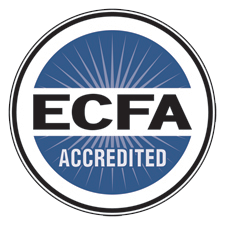In the history of cross-cultural missions and development work we often think of ourselves in the role of teacher. One thing I love about the approach of Children’s HopeChest is the desire to switch the paradigm and travel to build relationship and learn, instead of focusing on teaching and doing. I grew up as a missionary kid, and as an adult have continued to live and work in different cultures. Currently, I am am the Community Partnership Manager at HopeChest for Swaziland. I am grateful for continued opportunities to practice this paradigm shift. To travel as a humble and curious learner is exciting, and learning is a sincere and impactful way to show honor to people of another culture. We are all encouraged to be learners and invited to be curious!

So often, when we plan our visits to our CarePoint or orphanage, we focus on what we have to offer, what can we teach, or share or do…often these are appropriate and good things! But I feel challenged, and want to challenge others as well, to go as a learner first. As you travel to your CarePoint or orphanage, consider what areas of culture or history you may be ignorant of that you can ask questions about.
Did you already read a paragraph on Wikipedia? Good start, but there is still more to learn! Maybe your team could have short, daily, language lessons. Even if you are not gifted with languages, learning one new phase a day can mean a lot to someone in a different culture. Perhaps your team could have a cooking lesson worked into your itinerary, having the local cooks teach you a traditional recipe. Have you dug into the history of the region? Perhaps you could learn about the local chiefdom, or structure of the government. The more we understand the larger picture of cultural context the more pieces of cultural puzzles will fall into place and we can always keep learning things we didn’t know that we didn’t know! Maybe you can invite your CarePoint or orphanage to educate you on the holidays or cultural events they celebrate throughout the year. You could use that as a calendar of events to rally your sponsors around when you return from your trip, perhaps having a letter writing activity in advance of a holiday, or get together with your sponsors and cook them the traditional food you learned how to cook. Do you have an opportunity to worship together? There might be a song both the team and the children at the CarePoint know that you can learn in the local language. Many of the cultures we work in have traditional dances the children learn at a young age, consider having a time to learn about those.
But all these ideas are just a starting place.

The Community-to-Community model of HopeChest prioritizes mutual transformation and one way we can experience transformation is by taking the sometimes vulnerable stance of a learner–not an expert. But as we actively learn we want to go beyond cultural sensitivity and strive for inward transformation. David A. Livermore captures this idea articulately in his book, Cultural Intelligence.
“The primary distinction of this book is that it uses an approach to cross-cultural interaction that stems from inward transformation rather than that from information or, worse yet, from artificial political correctness. Our goal is not simply to learn more about different cultures, nor is it just to become better at ‘navigating cultural difference.’ We must actually become more multicultural people so that we might better express love cross-culturally.” – David A. Livermore | Cultural Intelligence
If you haven’t read it yet and want to explore this concept at a deeper level, Livermore’s book could be insightful as it is challenging for you and your community, either to read individually or as a team while preparing for your next CarePoint or orphanage visit.

Another intriguing read is The Culture Map, by Erin Meyer. Meyer’s expertise and clever articulation of potentially tricky concepts sheds much light on cultural and human interactions. The author digs in deep to understand underlying principles, expectations, and manifestations of culture that are sometimes so deeply ingrained in a culture that they are often not even aware of it themselves. While striving to understand culture (both foreign cultures and the ones that influence us) we do need to keep in mind that no matter how many layers of a cultural onion we peel back, even the most sophisticated stereotypes are still stereotypes. Some elements of culture will always remain intangible or unclassifiable, and ultimately nobody and no culture will completely fit into any box.
Please accept the invitation to grow in these areas with us, and pray and strategize on how you and your partnering community can creatively join us in this endeavour!





